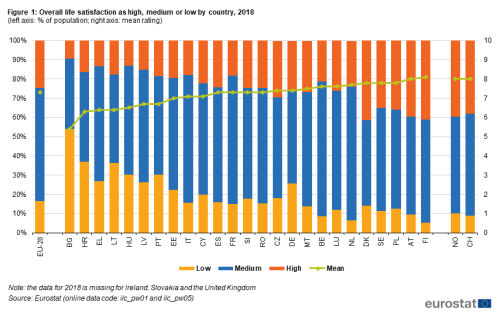Archive:EU energy mix and import dependency
Data extracted in Month YYYY
Planned article update: Month YYYY
Highlights
Tweet Text
Tweet Text
<Interactive graph to be set by unit B4:>
or
or
Russia is the most important trading partner of the EU for imports of natural gas, oil and hard coal. This SE article presents the EU’s energy supply exposure to the imports from Russia.
Full article
Natural gas
The reliance of the European Union on Russian natural gas has increased over the last decade. Natural gas consumption in the EU remained broadly flat over this period, but production fell by a third and the gap has been filled by increased imports. On average, the EU relies on Russia for XX% of its natural gas imports.
Oil
Russia is the world’s third largest oil producer after the United States of America and Saudi Arabia. Russia is the world’s largest exporter of oil (crude oil + petroleum products). On average, the EU relies on Russia for XX% of its oil imports.
Glossary, concepts and methodology notes
Oil includes primary oils (e.g. as crude oil, natural gas liquids, additives and oxygenates) and petroleum products (e.g. motor gasoline, automotive diesel, naphtha, fuel oil, kerosene). Natural gas includes gaseous natural gas (mostly imported by pipelines) and liquefied natural gas (also known as LNG and mostly imported in large ships that is re-gasified before injection into the grid. Hard coal is the coal with higher heating value such as anthracite, coking coal and other bituminous coal.
Source data for tables and graphs
Data sources
<description of data sources, survey and data availability (completeness, recency) and limitations>
Context
<context of data collection and statistical results: policy background, uses of data> Having a secure supply of energy is crucial for the well-being of European citizens and the economy. The EU works to ensure that energy supplies are uninterrupted and energy prices remain stable.
Direct access to
See also
Main tables
- Gross available energy by product (ten00121)
Database
- Energy (nrg), see:
- Energy statistics - quantities, annual data (nrg_quant)
- Energy balances (nrg_bal)
- Complete energy balances (nrg_bal_c)
- Energy indicators (nrg_ind)
- Energy imports dependency (nrg_ind_id)
- Trade by partner country (nrg_t)
- Imports (nrg_ti)
- Imports of solid fossil fuels by partner country (nrg_ti_sff)
- Imports of oil and petroleum products by partner country (nrg_ti_oil)
- Imports of natural gas by partner country (nrg_ti_gas)
- Imports of biofuels by partner country (nrg_ti_bio)
- Imports of electricity and derived heat by partner country (nrg_ti_eh)
- Imports (nrg_ti)
- Energy balances (nrg_bal)
- International trade in goods - aggregated data (ext_go_agg)
- International trade in goods - long-term indicators (ext_go_lti)
- International trade in goods - short-term indicators (ext_go_sti)
- International trade in goods - detailed data (detail)
Dedicated section
Legislation
Visualisations
External links
Notes
<footnote text will be automatically inserted if reference tags are used in article content text (use reference icon on ribbon)>
[[Category:<Subtheme category name(s)>|Name of the statistical article]] [[Category:<Statistical article>|Name of the statistical article]]
Delete [[Category:Model|]] below (and this line as well) before saving!
